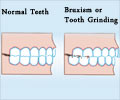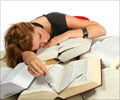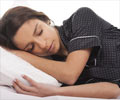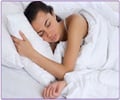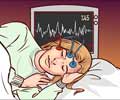- Types of Sleep Disorders in Children - (http://www.phoenixchildrens.org/medical-specialties/pulmonology/sleep-medicine/types-of-sd-in-children)
- Pediatric Sleep Disorders - (https://stanfordhealthcare.org/medical-conditions/sleep/pediatric-sleep-disorders.html)
- Important Things to Know About Sleep Problems and Sleep Disorders in a Child - (http://sleephealthfoundation.org.au/pdfs/childrens-sleep-disorders.pdf)
- Sleep Disorders Problems - (https://sleepfoundation.org/sleep-disorders-problems)
- Diagnosing Sleep Disorders - (https://medlineplus.gov/magazine/issues/summer12/articles/summer12pg18.html)
Sleep Disorders in Children – An Overview
"To achieve the impossible dream, try going to sleep." -- Joan Klempner
Children usually sleep well, however, those who do not, may have a sleep problem, which could affect their health and daily functioning.
Sleep, like hunger or thirst, is a vital need and is essential for a child's health and growth. Sleep promotes alertness, memory and performance. Recent research shows that children are not getting enough sleep. The studies also show that failure to get enough sleep can result in poor school performance and behavioral problems. Through the ages, the need for sleep has been a matter of contention between children and parents. Children are happy with staying up late, making do with less sleep while parents persistently worry that their children are not getting enough sleep.

Each child is different and has different sleep needs. Experts recommend that children get the following amount of sleep at each stage of growth:
Sleep requirement of children of various years are listed below -
- Newborns 0 to 3 months : 14 to 17 hours
- Infants 4-11 months : 12 to 15 hours
- Toddlers 1-2 years : 11 to 14 hours
- Preschool 3-5 years: 10 to 13 hours
- School age 6-13 years: 9 to 11 hours
- Teenager 14-17 years: 8 to 10 hours
It is very important for parents to know and recognize the symptoms of a possible sleep problem in their child. Sleep problems can have very significant consequences on the health of the child and their ability to function normally. The best way to deal with most sleep problems is to find them early and treat them as soon as possible.
Facts and Statistics On Sleep Problems In Children
- Majority of normal children at some stage experience some form of sleep disorder.
- About 20-25% of toddlers suffer from 'settling' and 'night waking' problems.
- Nearly 40-80% of children who displayed sleep problems between 15-48 months were found to have persistent sleep disorders 2-3 years later.
- About 69 % of children aged 10 years and under experience some type of sleep problem, according to a 'Sleep in America' poll carried out by the National Sleep Foundation (NSF) in 2004.
- Across the age range, sleep-related breathing problems occur in 2% of children. It's important to note that sleep apnea affects 1-3% of children.
- Prevalence of sleep disorders in children with physical or learning disabilities tends to be even greater. 86% of children aged up to 6 years, 81% of children aged 6-11 years, and 77% of children aged 12-16 years with physical or learning disabilities suffer from severe sleep problems.
What are the Types of Sleep Disorders in Children?
Sleep problems in children are either physiological, behavioral, or a combination of the two.
1. Behavioral Sleep Disorders
If the sleep disorder is caused by a behavioral problem, it will typically improve if the child gets his or her way for a few nights. If the condition fails to improve, the child needs to be examined physically to evaluate if something else is wrong. A physical sleep disorder like obstructive sleep apnea can also lead to additional behavioral problems.
Some of the most common disorders in children are outlined below:
When the child experiences difficulty in falling asleep during bedtime / going back to sleep in the middle of the night or loses sleep prematurely to wake up in the wee hours, the characteristics shown are that of behavioral insomnia of childhood.
This sleep disorder involves one or both of the following problems -
a) Sleep-onset association
About - Brief spells of waking is not unusual and this occurs most often during the time when we dream. This sleep stage is known as rapid eye movement (REM) sleep. Usually, we are unaware of these little sleep interruptions and return to sleep quickly.
Causes - Some children are dependent on their parents to put them to sleep. The child learns to connect or "associate" going to sleep with a person or an activity like being rocked or sucking a pacifier. This is the most common cause of children not being able to settle back to sleep when these sleep-onset associations are not available.
Remedy - A favorite soft toy, or special blanket can be taken to bed each night if these objects reassure the child, promoting a secure feeling. Keeping such objects close to the child is good to help the child fall back to sleep even if the child awakens during the night.
b) Limit-setting problems:
About - Limit-setting problems usually begin after the age of two. This is when the child does not want to go to bed at night. They throw a tantrum, or stall, and just refuse to go to sleep. Limit-setting problems can occur at bedtime, naptime, or when the child wakes up during the night. Children can become very innovative when they want to stall going to bed. They may ask for one more hug, a tissue, a drink of water, another story, to have the light turned off or on, or they may want to tell you something "important." It can be difficult to identify a real situation from what could simply be a delay tactic.

Remedy - Parents should not give in too easily to the child and must set boundaries. They must be firm about bedtime.
2. Obstructive Sleep Apnea (OSA).
When the child snores at night / breathes through the mouth / has a restless sleep that makes them tired during the day, they might be suffering from obstructive sleep apnea (OSA).
About - OSA causes disruption in the breathing pattern. It is usually a normal event, but can, sometimes, become a problem.
Causes - Enlarged tonsils or adenoids that block the upper airway when the child is sleeping, resulting in repeated arousals from sleep.
Consequences - Academic problems, daytime sleepiness, hyperactivity, chronic morning headaches, dry mouth, nocturnal bedwetting, recent weight gain and chronic mouth breathing.
Remedy - Removal of tonsils and adenoids is an option. In overweight children, weight reduction is advised. Continuous Positive Airway Pressure (CPAP) therapy that sends air under gentle pressure through a tube into a mask, which helps to keep the upper airway open is a safe and effective procedure in children.
3. Parasomnias
These are undesirable motor, autonomic or experiential activity occurring mostly or exclusively during sleep. They are common during childhood, typically benign and reduce in frequency as the child becomes older.
Your child wakes up suddenly at night / looks anxious when aroused / moves arms and legs over and over / goes stiff and calls out, they might be suffering from parasomnias
Parasomnias occur due to central nervous system (CNS) immaturity and hence prevalent in children. There is a family history associated with it. The two kinds of parasomnias are non-REM parasomnias and REM parasomnias.
- Non-REM parasomnias usually occur during the first half of the night during slow-wave sleep. Children do not remember that it happened when they wake up.
a) When children show slowed response with slurred speech and transient confusion in thought process when they get up in the middle of the night, it is termed as confusional arousal.
About - It happens in early childhood and resolves by around 5 years. It can happen when we wake them up suddenly or they get up on their own.
Remedy - Confusional arousals are fairly harmless in children. Parents must gently ask the child to lie down again.
b) When the child is walking around with eyes open and is difficult to wake up during the episode, they might be experiencing sleepwalking.
About - Sleepwalking affects about 40% of children aged between 3 and 7. This disorder causes children to walk or engage in other activities, while asleep, which they cannot recall during their waking hours. Usually, sleep walking begins within the first hour or two following the onset of sleep. Consistent sleep deprivation is a leading cause of sleep walking.

Remedy - Going to bed earlier than usual may be a good idea to get enough sleep and to cut the risk of sleepwalking. This condition usually goes away during the teenage years.
c) When your child talks, laughs or cries out during sleep / begins speaking, often unintelligibly, in a monotonous voice, which usually lasts for no more than thirty seconds, they might have sleep talking or somniloquy.
About - Most episodes take place during periods of sleep when they do not dream. It is very common and occurs in 50% of children.
d) When the child reacts with a loud noise or cries out in sleep which can be perceived as intense fear, they might be experiencing sleep terrors.
About - These are terror arousing experiences and can be linked with other parasomnias like confusion and walking. They are potentially dangerous.
Causes - Sleep terrors are likely to occur if the child has experienced some form of stress or has been sleeping less consistently. A change in environment may also induce sleep terrors in come children.
Remedy - The frequency of sleep terrors reduce when children get enough sleep.
e) When the child has the a habit of bedwetting at least twice a week beyond the age of 5, it is termed nocturnal enuresis.
About - Children have a restless sleep and have a decreased arousal response so they do not know when their bladders are full.
Consequences - Embarrassment and guilt when they are slightly older.
Remedy - Fluid restriction after 6 pm or repeated toilet training. Moisture sensors can be used to wake the child up in the night. Desmopressin is an antidiuretic that can be used to this condition.
- REM related parasomnias usually occur during the second half of the sleep period. Children have a clear memory of the event.
a) When the child wakes up due to awfully scary dreams or nightmares along with increased heart and respiratory rates, they might be experiencing nightmares.

About - Nightmares are known to plague many children (an estimated 3% of preschoolers and school going children frequently) and awaken them from sleep. In fact it is said that childhood can never pass without the experience of at least a single nightmare.
Causes - Nightmares could be triggered by stress, change in the environment or simply a frightful experience during the day. They also maybe associated with mood disorders or post-traumatic stress disorder.
Remedy - In children, nightmares are usually a part of growing up. The parent should console the child after an bad experience and it should go away with time.
b) When the child is unable to perform voluntary movement for a certain period of time, they are experiencing sleep paralysis.
About - Sleep paralysis is a temporary phenomenon where there is a delayed or limited response to the brain’s commands. It happens just before waking up from sleep or just before the child goes into deep sleep. Eventually, normal body functions return.
Consequences - Strain on the brain and the body.
Remedy - Children must follow fixed sleep and eating habits.
c) When the child acts out vivid, intense and violent dreams by talking, yelling, punching, kicking, jumping from bed, flailing their arms and grabbing while asleep, the condition is known as REM sleep behavior disorder (RBD).
About - When dreaming occurs during REM sleep, the brain signals cause a decreased muscle tone thus initiating muscle paralysis or atonia. This is normal functioning of the brain. In REM sleep behavior disorder, the opposite occurs and there is an increased muscle tone.
Consequences - Bruises or lacerations on themselves or people around. There is also daytime aggressiveness. RBD coexists with narcolepsy and neurodevelopmental disorders in children.
Remedy - Medications like clonazepam and melatonin.
4. Narcolepsy
When an adolescent has excessive and overwhelming daytime sleepiness and sudden loss of muscle strength, the child might have a chronic neurological sleep problem like narcolepsy.
About - Narcolepsy is characterized by sudden sleep attacks during the day. During episodes of laughter or upsets the muscles might weaken causing them to fall down. There could also be hallucinations when woken up or falling asleep.
Consequences - Can affect the psychological, social and cognitive development of the child thus impeding their success in school.
Remedy - Scheduled short naps and improving quality of nighttime sleep. Stimulant medication might be needed. Since it is a lifelong condition it is best to work together with a sleep specialist.
5. Delayed Sleep Phase Syndrome
When the child or teenager remains awake past their usual bedtime due to a change in schedule / has difficulty waking up in the morning / is sleepy during the day, they might be experiencing delayed sleep phase syndrome (DSPS).

About - This syndrome usually starts during the teen years and affects 7% of teens.
Causes - It is due to a physiological shift in sleep onset to later times of the day.
Consequences - Affects thinking, judgment and organizational skills
Remedy - Have a consistent sleep-wake schedule seven days a week so as to sync the sleep time with the body’s internal clock. Melatonin at doses of 0.5 to 3 mg, 2 to 3 hours prior to bedtime along with bright light therapy in the mornings 15 to 20 minutes after awakening.
6. Restless Legs Syndrome (RLS)
a) When your child has a distinctly unpleasant feeling in the legs / has an almost irresistible urge to move the legs at the time of lying down to get ready to sleep, they might be having a movement disorder called Restless Legs Syndrome (RLS).
About - It is not considered a serious medical problem, but people suffering from RLS find it difficult to fall asleep and stay asleep.
Causes - May be due to a deficiency in iron and diabetes.
Remedy - Lifestyle changes and iron or folate supplementation or maybe dopaminergic agents or dopamine agonists can help.
b) Periodic Limb Movement Disorder (PLMD) - When your child has repetitive leg movements in one or both legs at night / has disturbed sleep due to the leg movements / daytime drowsiness, the child may have what is known as periodic limb movement disorder (PLMD).
About - It commonly occurs with restless legs syndrome. It is seen in kids with neurodevelopmental disorders and sleep disorders like narcolepsy.
Remedy - Cutting down on caffeine, checking iron and folic acid levels and maybe medications like dopaminergic agents.
What is the Diagnosis for Sleep Disorders In Children?
A good history and tests like Polysomnography and Multiple Sleep Latency Test helps to diagnose sleep problems in children.
1. A Screening Questionnaire that helps to detect sleep deprivation in children is given below -
- Does your child need to be woken up every morning?
- How often does your child blissfully fall asleep on a drive in the car?
- Is your child so tired on some nights that he/she falls asleep well before the usual bedtime?
- Do you notice your child getting hyperactive, fussy or simply irritated during the day?
- Is your child experiencing difficulty in concentration or is there a change in the ability to think?
If the answer is in the affirmative to even one of these questions, it is time to alter the child’s bedtime to accommodate more sleep
2. Clinical Evaluation
An accurate history of a child's sleeping habits would help to differentiate the behavioral from the physiological sleep problems. In addition, the nature of sleeping difficulty, the duration of symptoms, medical and psychiatric history, and careful assessment of current and previous sleep patterns are all essential information that may aid in the diagnosis.
Maintaining a sleep diary gives a clear picture of a child's sleeping patterns. A sleep diary is maintained for two weeks and a record is made of a person's sleeping habits. Thus a sleeping pattern is established. Also, the diary is an essential when a pediatrician is consulted for the sleep problem of the child.
Listed below are some of the features that must be noted -
- Time the child woke up in the morning
- Times and lengths of naps during the day
- Time the child went to bed in the night
- Time the child settled in bed
- Issues in settling, what steps were taken, and how it worked
- Times and lengths of waking at night
- What action was taken during the night waking and how it worked
3. The Polysomnography (PSG) is an overnight test that is done in a laboratory that takes continuous multiple measurements, while a child is asleep, to document abnormalities in the sleep cycle. It helps to exclude sleep disorders like obstructive sleep apnea and periodic limb movement disorder.

A PSG is a painless test done when the child sleeps. Electrodes and other monitors kept on the scalp, face, chest, limbs and fingers measure brain, eye and muscle activities, heart rate and rhythm, blood pressure and the amount of oxygen present in blood and the amount of air moving in and out of the lungs.
4. A Multiple Sleep Latency Test (MSLT) is an evaluation tool to gauge the extent of daytime sleepiness and is used to diagnose narcolepsy. It is done mostly after an overnight test like PSG. The child is asked to nap 4 to 5 times a day for around 20 minutes. Monitoring devices are placed on the scalp and face to measure how long it takes for the child to reach the various stages of sleep, especially REM. The normal time required by a child to fall asleep is 10 minutes and above. It is considered abnormal if a child falls asleep within 5 minutes during these naps.
How do you Manage Sleep Disorders in Children?
Cultivating good sleep habits is essential in the management of sleep problems in children Treating sleep problems in children starts with developing good sleep habits. It is important for parents to start early and help their children develop good sleep habits such as the ones mentioned below.
- Follow a consistent bedtime routine.
- Establish a pleasant routine that may include reading, singing, or a warm bath. A regular routine will help your child understand that it will soon be time to go to bed.
- Set aside 10 to 30 minutes to get your child ready to go to sleep each night.
- Make sure there is some quiet period before the child goes to bed.
- Make sure your child is comfortable.
- Check the temperature in your child's room.
- Avoid tight clothes that restrict movement.
- The child may like to have a drink of water, have a night-light left on, or the door left slightly open.
- Try to handle your child's needs before bedtime so that he does not use them to avoid going to bed.
- Do not allow the child to indulge in video games or watch television during bedtime. Instead parents can use the time to talk with the child and help the child calm down before he/she drifts to sleep.

- Certain practices like rocking, holding, or feeding / nursing till the child falls asleep is not recommended as it enforces an unhealthy sleep inducing practice.
- Avoid chocolates and caffeinated drinks before bedtime. Children may feel stimulated with the surge of energy and may have trouble falling asleep.
- Good sleep habits can help overcome behavioral sleep problems.
Majority of children are probably not getting enough sleep, and many parents do not think this is much of an issue due to their lack of awareness about the subject. Lack of sleep may manifest as health and behavioral problems in a child. Understanding the importance of sleep in children and its effect on the overall health of both the parents and the child is the first step towards making sleep a family priority.
A child of today is over-scheduled, over-committed, over-extended, and as a result overtired. Children, who spend more time doing extracurricular activities, do so at the expense of sleep time. It pays to know that when children are sleep deprived the region most affected is that area in the brain which influences their emotional response, and controls their actions. In effect, children who get less sleep consistently experience difficulty in handling their emotions appropriately.
It is important to make bedtime a pleasant routine, which the child would voluntarily look forward to. Something as natural as sleep should not become a routine chore. Sleep should be patterned as fun. Remember if you want your child's dreams to come true teach them to first sleep well.





